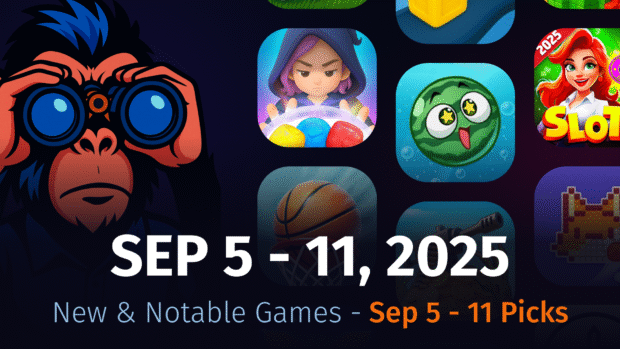
Unity’s Data Dilemma: Why Gaming’s Underdog Needs to Stop Playing It Safe
AnalysisHighlightsJournal 74 Joseph Kim June 12

AppLovin is printing money with 81% EBITDA margins, while Unity sits on data from 70% of mobile games—and does nothing with it (maybe?). In this episode, we reveal why game studios are “deathly afraid” of AppLovin’s monopoly and what Unity’s new Vector technology means for the $81 billion mobile gaming market.
What You’ll Discover:
- Why Unity’s pricing model gives them a hidden advantage over Unreal in mobile gaming (hint: it’s about UA economics)
- The “MAX playbook” that could transform Unity from a struggling engine company into an ad powerhouse
- How AppLovin’s blind spot in IAP data creates Unity’s biggest opportunity—if they’re brave enough to take it

📈 The $81 Billion Question: Can Unity Break AppLovin’s Stranglehold on Mobile Gaming?
Here’s a statistic that should keep Unity executives up at night: AppLovin’s ad business generates an 81% EBITDA margin. That’s not a typo. For every dollar of revenue AppLovin generates from ads, it keeps 81 cents as profit before taxes. Meanwhile, Unity—sitting on a potential goldmine of engine data from 70-80% of mobile games—has yet to fully leverage this asset for competitive advantage.
The gaming industry is witnessing a fascinating David vs. Goliath story, except David seems afraid to use his slingshot. We discuss Unity’s biggest opportunity—and its most puzzling hesitation.
Executive Summary
- Create’s fundamentals appear sound: After stripping away non-strategic assets, Create’s core revenue grew 9% in Q1 2025, suggesting the engine business has stabilized post-runtime fee crisis
- Grow shows resilience: Despite AppLovin’s dominance, Grow revenue increased 2% in Q1, with Vector demonstrating 15-20% performance uplift for IAP campaigns
- The real opportunity lies in data integration: Unity could transform its 70-80% mobile engine market share into a competitive advantage against AppLovin’s monopolistic grip
- Studios want competition: Game developers are “deathly afraid” of AppLovin’s market dominance and actively want Unity to succeed as a counterbalance
The Hidden Growth Story Behind the Headlines
While Unity’s headline numbers paint a picture of decline—revenue down 17% to $1.8 billion in 2024—the real story emerges when you peel back the layers. Create’s core revenue grew 9% in Q1 2025, while Grow increased 2%, suggesting both divisions are finding their footing after a tumultuous period. The company has been aggressively shedding unprofitable ventures, such as Weta Digital, and focusing instead on what actually generates revenue.
The financial turnaround is notable: They generated 286 million of free cash flow in 2024, which is up from 179 million the year before in 2023. For a company that many wrote off after the runtime fee debacle, this represents a significant operational improvement under new leadership.
The Create Paradox: Why Unity’s Engine Business Is Both a Weakness and a Secret Weapon
Unity’s Create division faces an existential challenge. As Josh Chandley provocatively stated: “Unity is not an engine company. In my mind, Unity is an ad network at this point.” With two-thirds of revenue coming from Grow (ads) and likely an even higher percentage of profits, the engine business increasingly looks like a legacy product.
Yet this apparent weakness could become Unity’s greatest strategic asset. The comparison with Epic’s Unreal Engine pricing model is instructive—Unity’s subscription model fundamentally limits revenue scaling, while Epic’s commission-based approach grows with developer success. But here’s the twist: “On mobile margins are tight, and it is…largely driven by performance marketing. And if Your LTV is 10 bucks and your competition’s LTV is 10 bucks, and Unity is taking 2 cents from them, but Unreal is taking a dollar from you, who’s going to bid more on UA?”
This pricing advantage creates a powerful moat in mobile gaming, where every penny counts in the user acquisition arms race.
The MAX Playbook: Unity’s Untapped Opportunity
Perhaps the most intriguing strategic option discussed was Unity following AppLovin’s MAX playbook. As Chandley explained, “MAX has given them omnipotence and incredibly powerful control” because AppLovin essentially pays developers to use MAX through the value of the data collected.
The parallel for Unity is compelling: “If the engine can accelerate Grow in the same way, for instance, MAX accelerated Applovin UA… MAX costs developers negative money. Applovin pays you to use it because the data that they get is so valuable.”
Imagine if Unity made a similar play—offering the engine for free or even at a negative cost in exchange for data access. As Matthew Kanterman noted: “If Grow triples…if they’re super successful, everything works and Grow as a 5 billion run rate business, they don’t need to be charging for the engine anymore.”
This isn’t just theoretical. Unity has all the pieces:
- 70-80% market share in mobile game engines
- Direct visibility into player behavior and monetization
- An ads business hungry for better data
The question isn’t whether they could—it’s whether they will risk it to get there.
The AppLovin Empire: Understanding the Monopoly
To understand Unity’s opportunity, you must first comprehend AppLovin’s dominance. The numbers are staggering:
- 80% market share in mobile ad mediation (auctions)
- 81% EBITDA margins on their ad business
- 5% tax on competitors—Unity literally pays AppLovin for the right to bid on inventory
“AppLovin’s first-party data is much higher quality than what Unity receives back from the auction…Applovin gets to know those things, and Unity doesn’t. That is an unfair data advantage.” The data disparity is particularly acute. While AppLovin knows whether an ad impression was a rewarded video or a banner ad (crucial for user valuation), Unity receives this information through a convoluted chain that often breaks or omits critical details.
The MAX Factor: How AppLovin Turned Mediation Into a Money Printer
AppLovin’s MAX platform represents a masterclass in platform economics. As Chandley explained, “Applovin pays you to use it because the data that they get is so valuable.” They’ve created a virtuous cycle where:
- Free mediation platform attracts publishers
- Publisher adoption generates superior data
- Better data improves ad targeting
- Superior performance justifies premium pricing
- Market dominance allows them to set rules and extract fees
For ad-monetized games, the lock-in is nearly complete: “They tell you that you are not allowed to run ad UA campaigns unless you use MAX because that’s how the technology works.”
Unity’s Blind Spot Advantage: The IAP Opportunity
While AppLovin dominates in-app advertising (IAA), they have a critical vulnerability: “For every dollar of ad monetization that happens in mobile gaming, there’s probably 3 to 4 of IAP.” AppLovin only sees IAP revenue when they caused the install, leaving a massive data blind spot.
This is where Unity’s engine dominance becomes a strategic gold mine. With integration, Unity could theoretically see:
- Every purchase made in 70-80% of mobile games
- Player behavior patterns across the entire lifecycle
- Real-time monetization data without attribution delays
The potential impact? Chandley painted a compelling picture: “Imagine if Unity had the advantage for IAP or Applovin has for IAA. That’s the upside.”
Vector’s Promise: Early Signs of Life
Unity’s new Vector ad engine shows encouraging early results. “I’ve heard numerous first-hand accounts…of IAP campaigns and people running IAP campaigns where they’ve seen 15 to 20% uplift.” While this pales compared to AppLovin’s 10x advantage on MAX, it’s significantly better than many expected.
The contrast with AppLovin’s Axon 2.0 rollout is striking. Where AppLovin initially “tanked CPMs” and directed clients to use Unity while they fixed issues, Vector launched with immediate performance improvements. For a company with “a history of execution problems,” this represents a meaningful shift.
Strategic Implications: The Path Forward
For Unity Leadership
We strongly believe Unity needs to take a big risk: stop playing defense. “Unity probably underestimates how deathly afraid some game studios are of Applovin.” The industry wants—needs—a viable alternative to AppLovin’s monopoly.
Three critical decisions loom:
- Data Integration: The technical capability exists. Unity has had an ads business since 2016-2017. The question isn’t “can they?” but “will they?”
- Pricing Strategy: Follow the MAX playbook—consider making the engine free or negative-cost (via rebates) to maximize data collection. As Kanterman suggested, “If grow as a 5 billion run rate business, they don’t need to be charging for the engine anymore”
- Cultural Transformation: Can leadership dramatically improve Unity’s historical legacy of failed execution? Can the culture change from operating like it’s in maintenance mode rather than fighting for survival?
For Game Studios
The industry stands at an inflection point. Studios must decide whether to:
- Accept AppLovin’s monopoly and optimize within those constraints
- Actively support Unity’s challenger position through adoption and data sharing
- Explore emerging alternatives before the market completely consolidates
Risk mitigation strategies:
- Maintain relationships with multiple ad networks
- Test Unity’s Vector for IAP campaigns—early adopters may gain advantages
- Consider the long-term implications of single-vendor dependence
For Investors
Unity presents a complex investment thesis. The stock has already rallied 46% over the past 12 months, and at 26x EBITDA, “There’s less room for error at this point.”
Key factors to monitor:
- Vector adoption rates and performance metrics
- Any announcements regarding engine-ads data integration
- Market share shifts in both mediation and UA spend
- Management’s willingness to make bold strategic moves
The Leadership Question That Changes Everything
Ultimately, Unity’s fate may rest on a single factor: leadership.
“Can Matthew Bromberg, can he drive performance in the business?”
The technical pieces exist. The market opportunity is massive. Studios want competition. What’s missing is the willingness to stop apologizing for past mistakes and start acting like the platform powerhouse Unity could become.
Three questions for the industry to ponder:
- If Unity made its engine free tomorrow in exchange for full data access, would developers accept the trade-off?
- How long can AppLovin maintain 81% margins before regulators or competitors force change?
- What happens to mobile gaming if Unity fails to provide meaningful competition?
The mobile gaming industry is experiencing its most significant platform battle since the introduction of iOS 14.5 privacy changes. Unity has the tools to compete—70-80% engine market share, improving ad technology, and an industry desperate for alternatives. Whether they’ll use them remains the $81 billion question.
The clock is ticking. Every day Unity hesitates, AppLovin’s data advantage compounds. Every quarter of indecision is another cohort of games locked into MAX. The industry is watching, waiting, and hoping that gaming’s underdog finally decides to fight.
Because in the end, monopolies aren’t broken by better technology alone. They’re broken by companies brave enough to use them.







